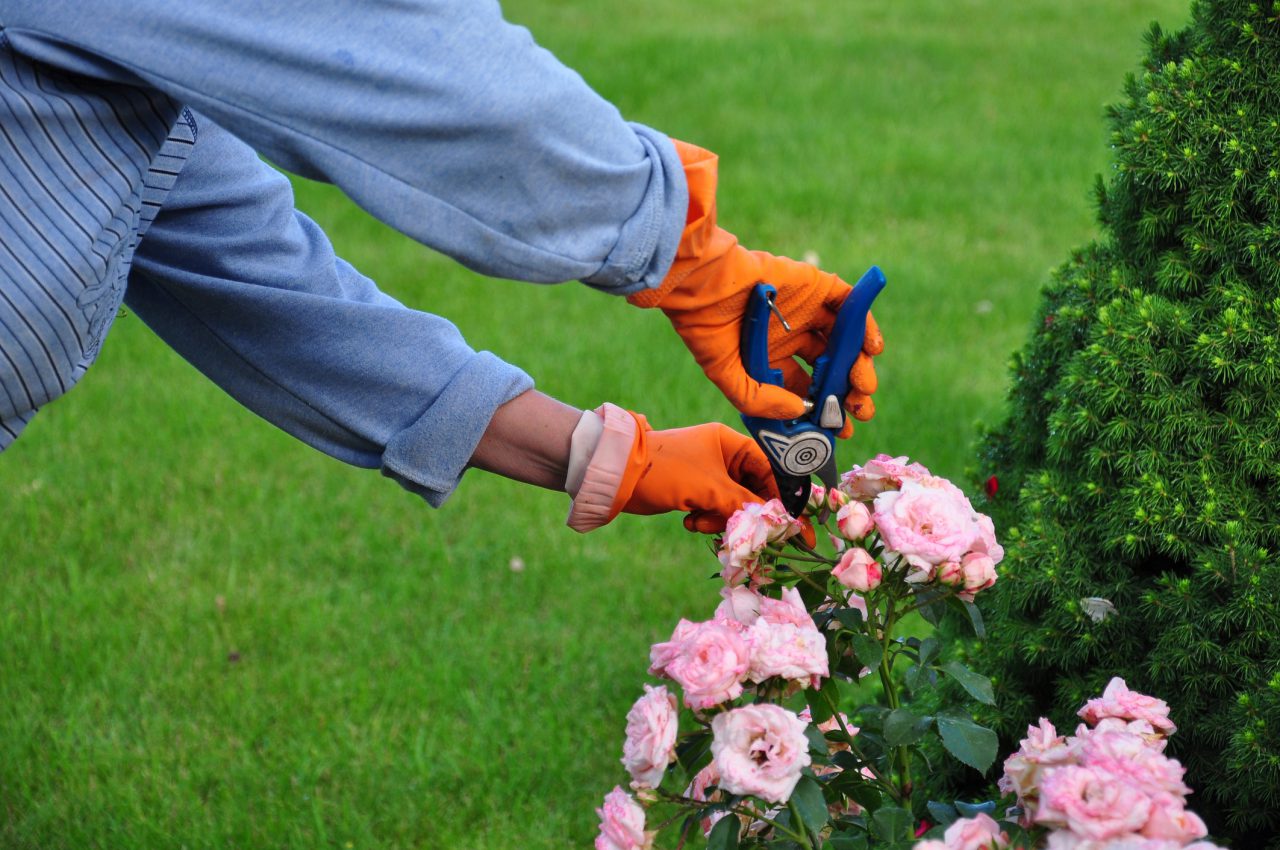Do not believe anyone who tells you that growing roses is a simple matter of digging a hole, plopping the rose in the hole and filling it up. Do you ever notice those pathetic Knockout roses in suburban parking lots? They are never fed, never watered and have no shelter from the hot summer sun. That is what I call rose abuse.
Presenting the world with presentable roses requires some effort, including pruning. All own-root roses need a certain amount of pruning each year, which occurs six to eight weeks before your last frost date.
Please note that I said “own-root” roses. A rosarian once commented to me that it’s hard to prune an own-root rose to death, whereas canes coming up from the rootstock can entirely overtake the grafted rose.
The act of pruning is usually preceded by fits of trepidation. That's because cutting a shrub rose back to a few bare canes is no one’s idea of fun. However, if you know what you are doing and, more importantly, why you are doing it, the job becomes less stressful.
First, make sure you have some decent rose gloves that shield a good part of your lower arm. Almost all roses have thorns – and deer are the only creatures I know of who can pounce on the shrub without ending up a bleeding mess. Rose gloves are not gardening gloves, which are considerably thinner.
Second, make sure your tetanus boosters are up to date. Tetanus is a bacterial toxin in the soil, which if exposed to a bleeding wound can create problems. There is no cure for tetanus.
Now to the pruning: The first thing you’ll do is cut back the shrub so that all the canes are the same length. For older shrubs, this means cutting back approximately by one-third of the plant; for younger shrubs, prune back less.
Once you have done this, determine which canes are the main canes and which canes are the secondary ones. The primary canes are the more substantial ones, whereas the secondary canes are rather spindly. Keep the main canes, cut out the secondary ones.
Now look to see if any canes are crossing one another or are rubbing against one another. In this case, one of the canes has to go for the health of the plant. Otherwise you’re enabling pathogens to enter any opening on those canes.
Instructions always tell you to cut out the diseased and dead canes – and I find this is the hard thing to determine. I have two chestnut roses whose canes are gray. As the canes are all gray, it’s impossible to determine which canes are dead. Because I have the same problem with the climbing rose “Mme Alfred Carrière,” I will wait until the leaves are out – and then assume those canes without leaves are probably dead or unhealthy. On other roses it isn’t difficult to determine which canes are dead, as they are a dark color, whereas the live canes are far lighter.
Now look at the rose objectively and cut out those canes that are growing out at awkward angles. Your eventual aim is to get the shrub pruned back to four, five, or six main canes. Now cut out all those junky, wimpy little canes that grow everywhere and produce no flowers. These are worthless canes that only the rose can love. They aren’t good for producing blooms, and they will never grow to be strong canes. These ugly stepsisters have to come out.
About this time you’re probably asking yourself why you are doing this thankless task. Disposing of long canes filled with thorns that catch either you or your clothing is not fun. They take a long time to compost – and any rose worth its salt at this point is looking sulky.
You’re doing this for several reasons: (1) Pruning increases the health of the rose and strengthens the main canes; (2) you are actually increasing rose production, as the rose will be encouraged to put out new growth – and the blooms occur on new growth; and (3) if you didn’t prune, the rose would eventually become a tangled mess of canes and thorns.
The final cut of the remaining canes will come about an inch above the bud nodule. You should notice a swelling in a nodule and there might even be some growth. Then sit back and admire your work – and let the roses take over. They will thank you by performing as the spectacular prima donnas they are. And just think: You won’t have to get another tetanus shot for 10 years.









